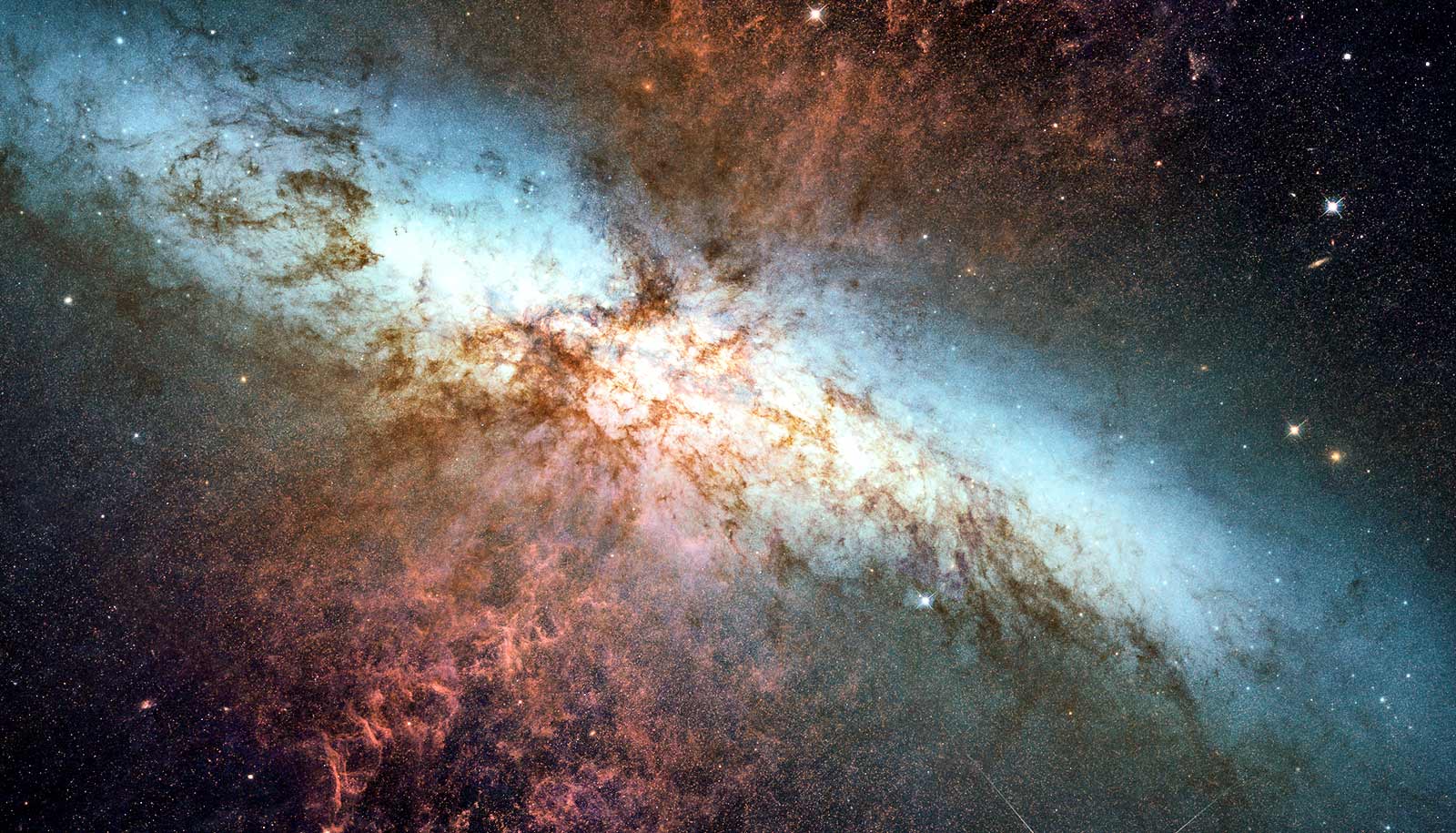A team of scientists appear to have detected the first X-rays coming from a type Ia supernova.
Astronomers are fond of type Ia supernovas, created when a white dwarf star in a two-star system undergoes a thermonuclear explosion, because they burn at a specific brightness. This allows scientists to calculate how far away they are from Earth, and thus to map distances in the universe.
“It is surprising what you can learn from so few photons…”
A few years ago, however, scientists began to find type Ia supernovas with a strange optical signature that suggested they carried a very dense cloak of circumstellar material surrounding them.
Such dense material is normally only seen from a different type of supernova called type II, and is created when massive stars start to lose mass. The ejected mass collects around the star; then, when the star collapses, the explosion sends a shockwave hurtling at supersonic speeds into this dense material, producing a shower of X-rays. Thus, we regularly see X-rays from type II supernovas, but they have never been seen from type Ia supernovas.
When the team studied the supernova 2012ca, recorded by the Chandra X-ray Observatory, however, they detected X-ray photons coming from the scene.
“Although other type Ia’s with circumstellar material were thought to have similarly high densities based on their optical spectra, we have never before detected them with X-rays,” says study coauthor Vikram Dwarkadas, research associate professor in the astronomy and astrophysics department at the University of Chicago.
The amounts of X-rays they found were small—they counted 33 photons in the first observation a year and a half after the supernova exploded, and ten in another about 200 days later—but present.
“This certainly appears to be a Ia supernova with substantial circumstellar material, and it looks as though it’s very dense,” he says. “What we saw suggests a density about a million times higher what we thought was the maximum around Ia’s.”
‘Heavy metal’ sheds light on super-charged supernovas
It’s thought that white dwarfs don’t lose mass before they explode. The usual explanation for the circumstellar material is that it would have come from a companion star in the system, but the amount of mass suggested by this measurement was very large, Dwarkadas says—far larger than one could expect from most companion stars.
“Even the most massive stars do not have such high mass-loss rates on a regular basis,” he says. “This once again raises the question of how exactly these strange supernovas form.”
“If it’s truly a Ia, that’s a very interesting development because we have no idea why it would have so much circumstellar material around it,” he says.
“It is surprising what you can learn from so few photons,” says Chris Bochenek, lead author of the study and a graduate student at the California Institute for Technology, whose work on the study formed his undergraduate thesis at the University of Chicago. “With only tens of them, we were able to infer that the dense gas around the supernova is likely clumpy or in a disk.”
Telescopes capture blue glow of supernova collision
More studies to look for X-rays, and even radio waves coming off these anomalies, could open a new window to understanding such supernovas and how they form, the authors say.
The researchers report their findings in a paper appearing in the Monthly Notices of the Royal Astronomical Society.
Source: University of Chicago



